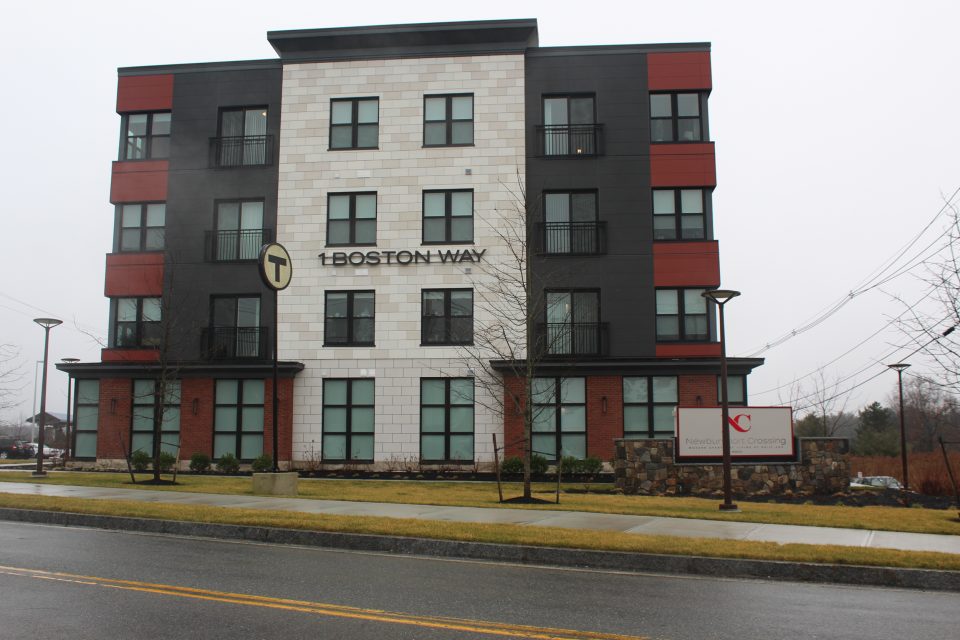REGIONAL – The commonwealth thinks the answer to the housing shortage and climate change issues is to force communities to allow more apartments and condominiums to be built around mass transit stations.
“By allowing multifamily housing near transit, we can create new housing in walkable neighborhoods closer to transit, which is not just good housing policy, it is good climate and transportation policy, too,” Mike Kennealy, secretary of the Department of Housing and Economic Development, wrote to local officials last month.
Although not specifically mentioned, the new initiative would also likely bring more riders to trains and buses.
Gov. Charlie Baker and the legislature have approved a new law that will rewrite local zoning regulations in 175 Massachusetts Bay Transit Authority (MBTA) communities, including all North Shore towns and cities.
Baker and other officials have been talking about making this change for years, but local planning officials seem caught off-guard and are now grappling with what the new law means and how it will impact their communities.
“These new provisions, added hastily to the Zoning Act, create a whole new level of complexity for all involved in local land use regulations,” wrote Newburyport Planning Director Andy Port to The Town Common. “I suspect a number of other communities will express similar concerns in the coming weeks/months, resulting in some changes to the proposed draft guidelines as they take effect.”
Ipswich Planning Director Ethan Parsons told the town’s planning board last month that the provisions will be “controversial.”
The new provision added to Section 3A of Massachusetts General Laws c. 40A mandates that municipalities make zoning law changes easier by requiring only a majority vote, instead of the current two-thirds vote.
“Where there is majority consensus in communities around increasing housing production, a minority of voters should not be able to block zoning reform,” Kennealy wrote.
The new provision, a part of the state’s economic development package, also requires that an MBTA community have at least one zoning district of reasonable size in which multi-family housing is permitted as of right and meets other criteria that has:
- Minimum gross density of 15 units per acre
- Not more than a half mile from a commuter rail station, subway station, ferry terminal or bus station.
- No age restrictions
- Suitable for families with children.
The term As of Right means a proposed multi-family development near a train or bus station can be reviewed by the town’s planning and zoning boards, but ultimately must be approved by the town.
To force communities to make this change in its zoning regulations, the state will withhold funding from its Local Capital Projects Fund or the MassWorks infrastructure program for any MBTA community that fails to comply with this provision, Kennealy wrote.
The 175 cities and towns, including all North Shore communities from Salisbury and Haverhill to Gloucester, have a year to comply, while the state finalizes the regulations. While most North Shore cities and towns are designated as MBTA communities, only Newburyport, Ipswich and Rowley have train stations. Others like Amesbury and Salisbury have bus stations that may come under the new regulations.
Also on the list are Beverly, Essex, Georgetown, Groveland, Hamilton, Merrimack, Newbury, Wenham and West Newbury.
Newburyport may be in compliance because it created a 40R Smart Growth District around the MBTA station, which encourages multi-family housing like Minco’s multi-story apartments, Newburyport Crossing.
But Port wrote that the “DHCD’s subsequent interpretation and application of that enabling legislation seems to go quite a ways beyond that” with “arbitrary thresholds for both minimum district size and the total number of housing units permitted as-of-right within said district, regardless of location/context.”
Port said he will follow up with state officials and plans to respond to the state guidelines early in 2022.
He questioned what the state means by the term reasonable size, which he described as a “relative rather than an absolute determination.”
“Because of the diversity of MBTA communities, a multi-family district that is reasonable in one city or town may not be reasonable in another city or town. Objective differences in community characteristics must be considered in determining what is reasonable for each community,” Port wrote.
“Setting a formulaic baseline number for all communities, without taking context into account, (as DHCD’s guidelines appear to do), cannot possibly/adequately accommodate the above recognition,” he wrote. “I suspect a number of other communities will express similar concerns in the coming weeks/months, resulting in some changes to the proposed draft guidelines as they take effect.”



